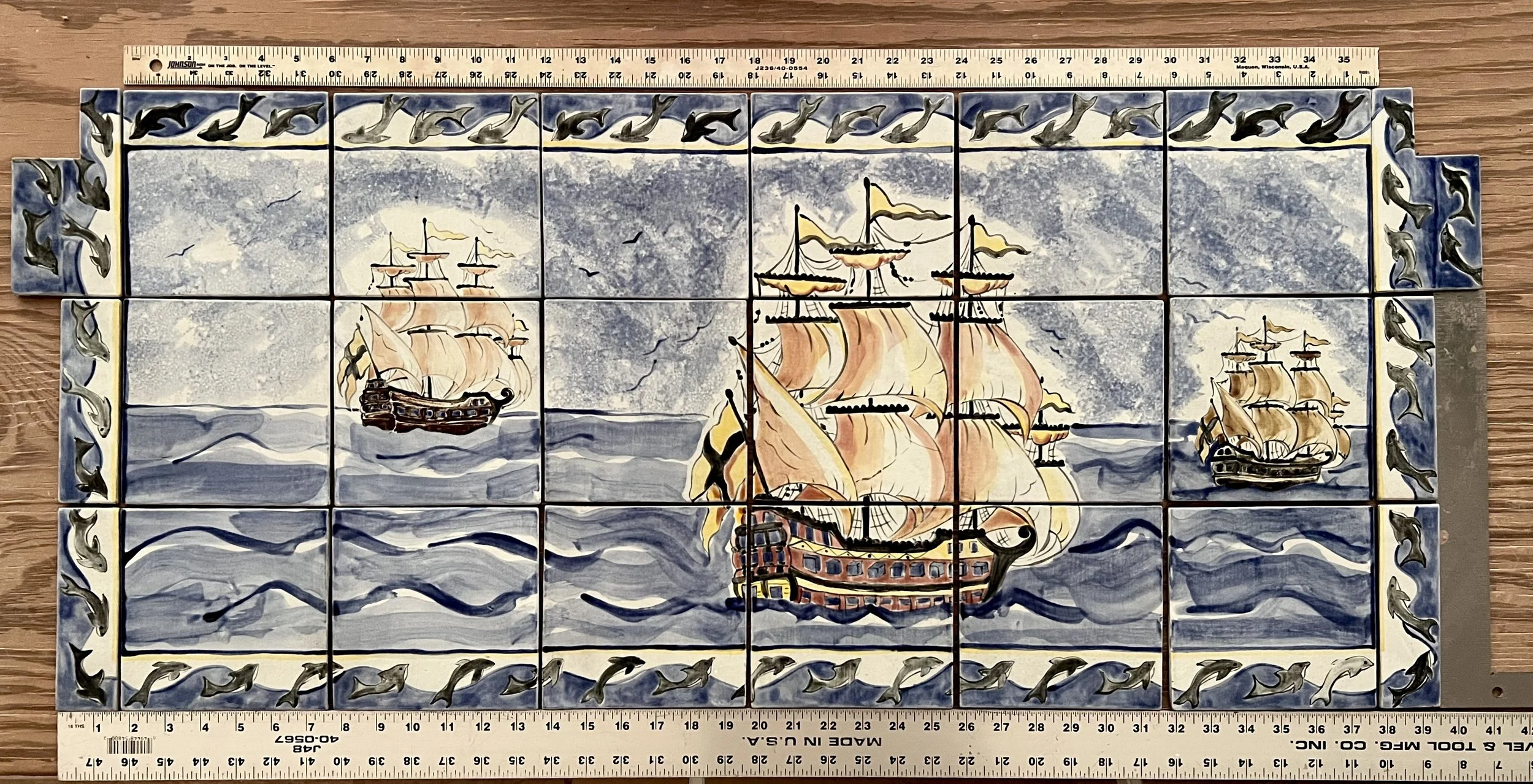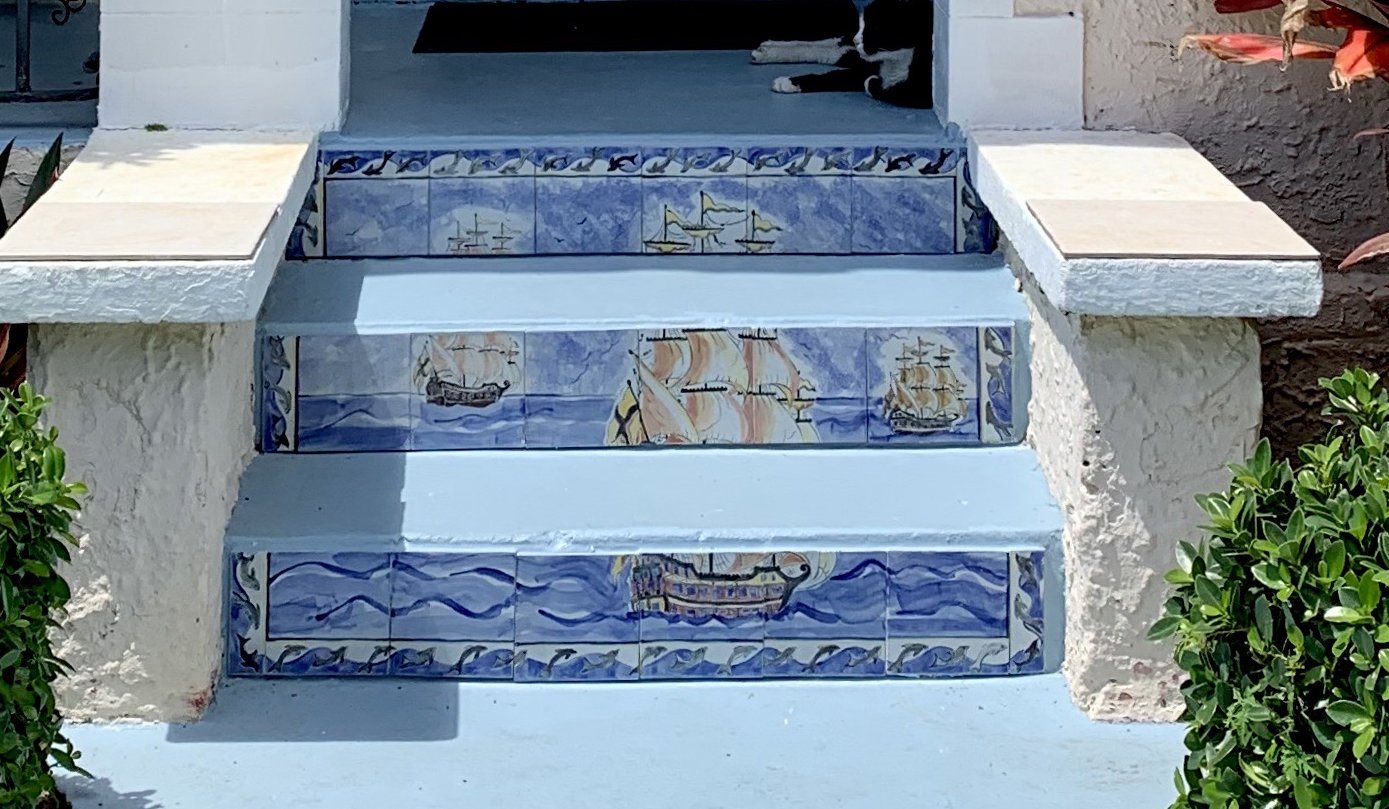I like to photograph the finished murals with rulers; that way, the customer knows the size is correct. The first step is a bit wider than the two below hence the extra bit of border in the top row. You can see how it works in the next photo.
In ceramics, "D" is for defltware–the world-famous blue and white earthenware pottery. Although Deflt is a town in Holland, delftware describes all 'tin-glazed earthenwares' made in the Netherlands and the British Isles. Delftware potters referred to the work as porcelain; however, it was a cheap version of the Chinese pottery of the time. The potters would coat the reddish clay with a tin oxide glaze. Then as now, tin acts as an opacifier and a white pigment for glazes. Tin glazes are excellent for ceramic color while pretending to be porcelain because it fires white, shiny, and opaque. Many countries use the same process. In Italy, the work is called Maiolica; in France, its name is Faience; in Spain, its Talavera. It's all earthenware with a tin-based glaze. Delftware was the inspiration behind the Spanish galleon project I worked on in mid-June, relearning how to use glazes as watercolors.
“I think it came out beautifully. When people walk or drive by, I’m seeing double takes. I’ve already given out a couple of your cards. Bravo!”
– Shelly K.
Blue and white are as popular in design today as they were in the 17th century. Together they're classic, traditional, humble, and refreshing. The pair is as hopeful as a sunny day with a cloudless sky–a true blue combination. No wonder it's endured. Delft blue socializes with many colors; some favorites are lemon, tangerine, pear, and pomegranate. I was delighted when the customer suggested a few more colors. Here's the finished project.
Notice the Spanish galleon in the concrete work at the top of the house.



